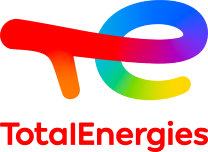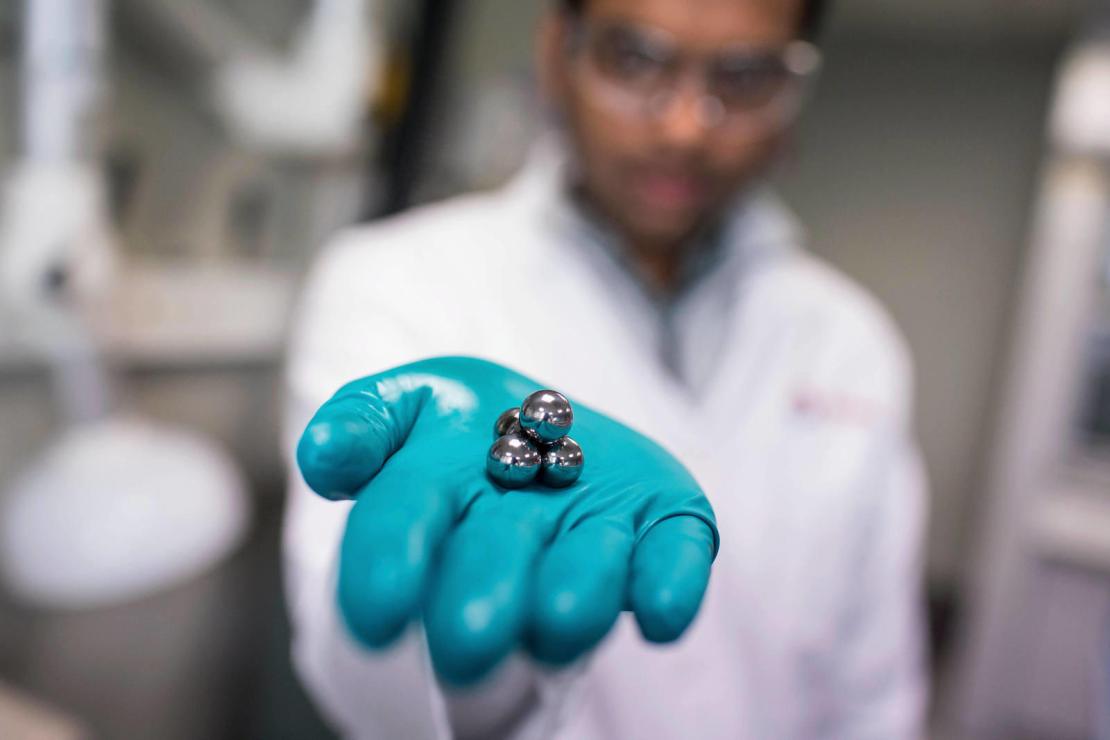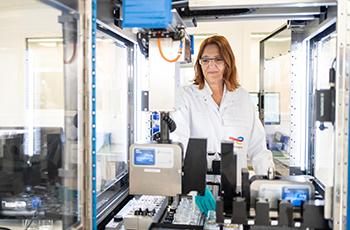Our exploration and production operations are faced with a growing number of constraints, including increasingly complex fields, volatile crude oil prices, and the need to factor in climate change. For our teams across the world, these challenges also represent a tremendous opportunity, encouraging us to constantly explore new frontiers and continually improve our production techniques while bringing costs down and reducing our environmental impact. When working to provide competitive responses to today's energy issues and secure tomorrow's energy solutions, our strength lies in our ongoing process of innovation.
R&D: the driving force behind TotalEnergies' competitiveness
With more than 200 patents filed every year across the Comany, TotalEnergies remains true to the pioneer spirit that it has embodied since its creation. Our R&D focuses on four key areas:
- First and foremost, developing operations and programs that directly contribute to the TotalEnergies company's ambition to become the responsible energy major.
- Preparing for technological breakthroughs to capitalize on opportunities and position TotalEnergies as a major player in the future of energy.
- Joining forces with select partners to lead projects, drawing on specific, top-level skills.
- Optimizing R&D resources, including human talent, infrastructure and regional centers of excellence.
Our R&D is organized around strategic programs and investments designed to seek out effective, safe and lasting solutions that set us apart from competitors. Our teams are working on eight cross-functional programs led by our four business segments (Exploration & Production, Refining & Chemicals, Marketing & Services, and Gas, Renewables & Power), as well as so-called vertical programs that are specific to each business segment.
R&D is crucial for Exploration & Production, as it continuously perfects the technologies used to meet global demand for oil and gas under increasingly tight operating conditions. Our R&D teams focus on strategic areas to ensure an efficient, responsible future for oil and gas. They strive to steer the Company toward the best opportunities for exploration and to improve the recovery of oil and gas, while consolidating its tools and expertise to manage risks and environmental impact. Their research projects are focused on finding new ways to collect and process geophysical data (for subsurface imaging that reflects reality as closely as possible), improving reservoir modeling and simulation tools, and developing better recovery technologies. The teams are also committed to maintaining our competitive lead in the deep offshore market and supporting the Company's progress in unconventional oil and gas.
Resources to match our ambitions
TotalEnergies is one of the few oil majors to have an in-house infrastructure spanning the entire development process, from laboratory testing to industrial-scale production. We also have a worldwide network of R&D centers for exploration and production, with locations in the United States, the United Kingdom, Norway, Qatar, and soon Brazil. Furthermore, we develop top-tier partnerships with academic institutions and major companies from the energy industry.
Our prospective labs (Nanotechnologies, Sensors and Nanosensors, Biotechnologies, Robotics) are at the forefront of our R&D work and form part of our cross-functional programs. They enable TotalEnergies to explore emerging innovations with high disruptive potential in areas other than oil and gas, which the Company can then apply to its own operations.
Technological Innovation Platforms (TIPs) work to quickly integrate technologies that have reached industrial maturity into exploration and production projects
Contributing to a cleaner energy future
Preparing for the future and becoming the responsible energy major also means being able to rethink the way we do things so that we can reduce our environmental impact. We take steps to ensure continuous improvement and have fully integrated the Sustainable Development scenario put forward by the International Energy Agency (IEA) into our strategy to reduce our greenhouse gas emissions and enhance our energy efficiency.
For greenhouse gases, our efforts have resulted in a tangible commitment to reducing routine flaring at our oil and gas facilities. We were the first company to join the World Bank's "Zero Routine Flaring by 2030" initiative and have set ourselves a medium-term objective to reduce flaring by 80% between now and 2020 on the sites where we operate.
We are always striving to optimize energy efficiency in our facilities for increased production using less energy. In early 2016, the Company set itself the target of improving its energy efficiency by an average of 1% per year for the 2010-2020 period. We have seen progress of nearly 9% since 2010. Innovative projects such as DIESTA air cooling technology, which improves both the environmental and cost performance of LNG facilities, are an important part of this.






